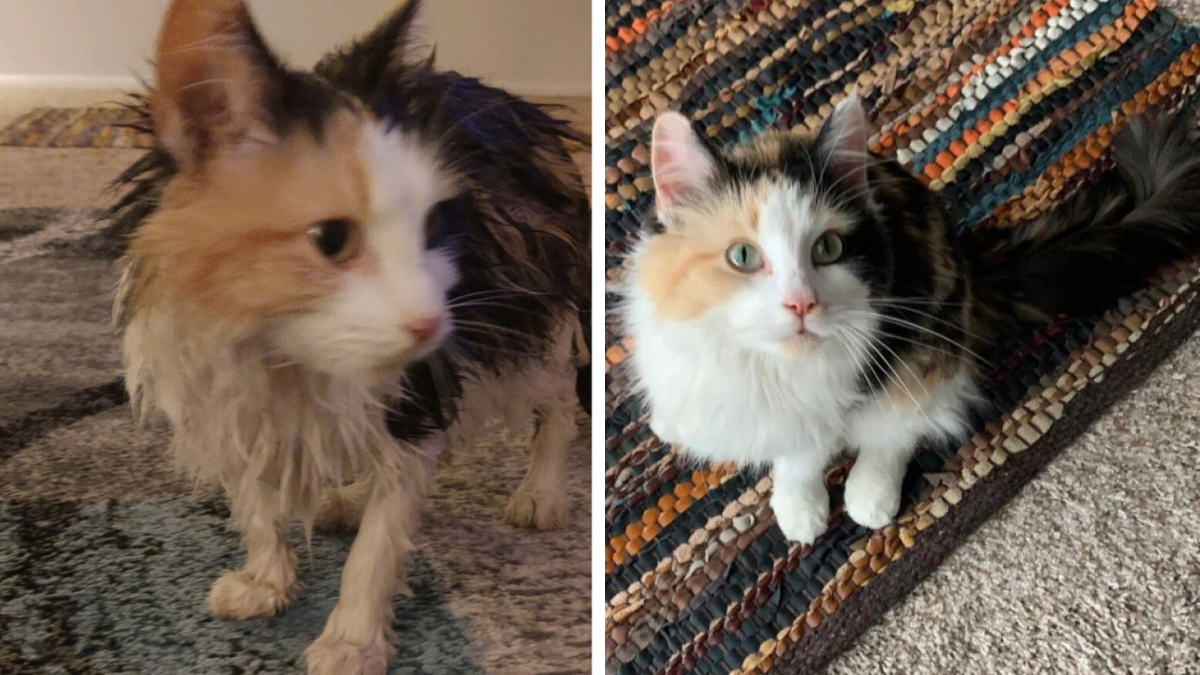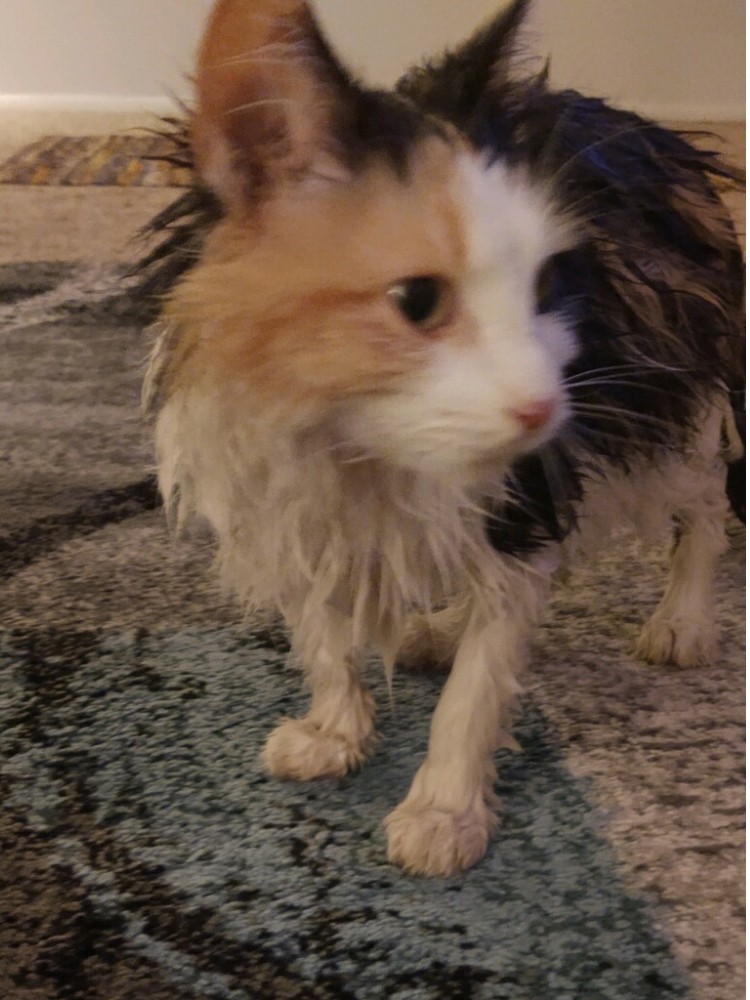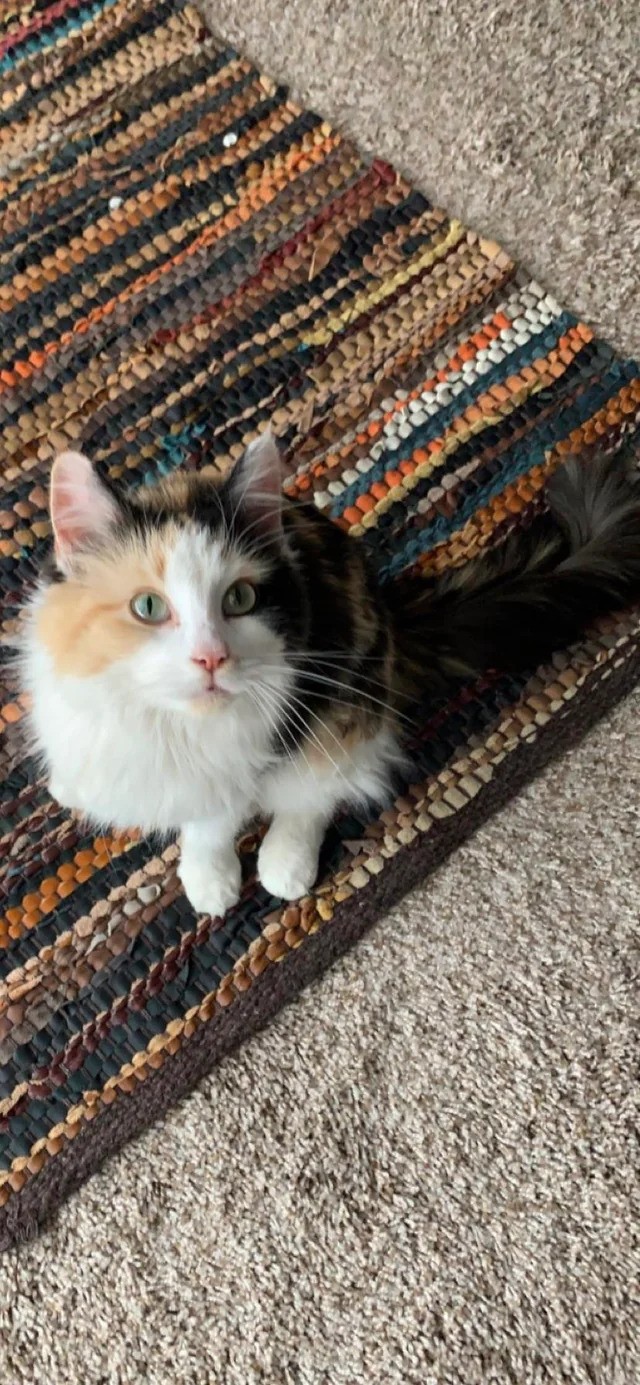📖 Table of Content:
On a rain-soaked afternoon in March 2023, a passerby named Jax from Cleveland, Ohio, spotted something heartbreaking in a gutter: a small, mud-caked creature so weak and so soaked that he “didn’t even realize she was a cat at first.”
With help from a friend, Christina, he scooped the animal up and rushed her home, gently cleaning the grime from her fur. That night, the rescued animal, later named Raina in honor of the storm that brought her to safety, barely moved; by the next morning, she was well enough to lick at food—an early sign that she might survive.
A veterinary examination confirmed Jax’s worst fears about how badly Raina had suffered. At roughly one year old, she weighed only about six pounds and suffered from fleas, tapeworms and malnourishment.
The early care she received — food, deworming, flea treatment and veterinary monitoring — began the slow process of restoring her body and trust. Jax admits he never intended to keep her long term; after two months, he even asked a friend to adopt her. But within 24 hours, he missed her so much he asked for her back, and from that moment Raina’s fortunes changed.
A Quiet, Dramatic Transformation
The turnaround was remarkable. Under steady care and a safe home, Raina gained weight and strength: she’s now an 11-pound cat with a glossy coat and a buoyant, friendly personality that delights everyone who meets her. Jax says she’s “one of the friendliest cats I’ve ever met,” noting that she now greets strangers with enthusiasm.
At the same time, some signs of her hard life remain — loud sirens and car horns still startle her, a hint that her time surviving on the streets included frightening encounters. Those reactions, Jax believes, suggest she may have had difficult experiences outdoors before being found.
Raina’s before-and-after images and Jax’s account struck a chord online. He posted her story on Reddit, where the tale of the gutter rescue and the dramatic glow-up quickly gained viral attention. The post drew scores of supportive comments from people moved by how love and basic care can reverse what neglect and exposure do to an animal. Readers praised Jax’s choice to keep caring for Raina, and many used the story to celebrate the work of everyday rescuers.
Raina’s recovery is more than a single happy ending; it’s also a sharp illustration of the broader pressure on animal welfare systems. While some animals find lucky human hands, many more arrive in need of care, and rescues and fosters play a crucial role in saving lives.
Why Raina’s Story Matters
There are a few simple reasons the story has resonated. First, it’s a reminder that timely intervention saves lives. If Raina had not been noticed on that wet March afternoon, her injuries and malnourishment might have proved fatal.
Second, it shows how quickly an animal can respond to consistent care — nutrition, parasite treatment, and a calm, safe home environment can produce rapid, visible improvement. And finally, it highlights the human side of rescue: ordinary people (like Jax and Christina) who make extraordinary choices when they encounter an animal in need.
Raina’s continued friendliness — her eagerness to greet people and her apparent enjoyment of company — stands as a small miracle after her ragged start. Her sensitivity to loud noises serves as a reminder that even after physical healing, emotional recovery can take more time and patience.
For Jax and the community who cheered her on online, those nuances are part of why her recovery feels so meaningful: it’s not only about physical survival, but about restoring a sense of safety and joy.
For anyone who follows rescue work or is thinking about helping animals in their own community, Raina’s story offers practical inspiration: keep an eye out for animals in distress, support local shelters and fosters, and remember that investment of time, money and care can turn the very worst situations into thriving lives.
Raina went from a gutter-bound, nearly lifeless kitten to an 11-pound cat who lounges in the sun, seeks cuddles, and greets new faces with affection. Her life now reads like a different chapter entirely — one whose thesis is simple: small acts of kindness can remake a life. If her story does one thing well, it’s this: it reminds us that rescue works, and that when people step in, even the most battered animals can learn to trust again and to live like royalty.


